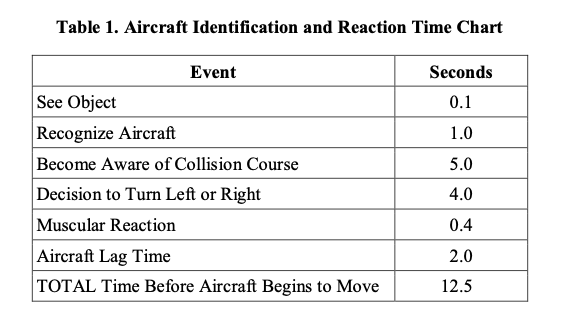Collision Avoidance
Risk Factors
- Pilot conditions
- Fatigue
- Boredom
- Illness
- Distraction and preoccupation
- Environmental conditions
- Haze
- Smoke
- Precipitation
Pilot's Handbook of Aeronautical Knowledge pg. 14-28
See and Avoid
- Most collision occurs within in 5nm of an airport or navaid
- Limitations of our eyes
- Relies on visual scanning techniques
- Avoid directly overflying NAVAIDs
Scanning Techniques
- Shift your glance about 10° over the sky for 3-5 seconds at a time
- Peripheral vision is good at spotting collision threats
- No relative motion: On a collision course
- More information in AC 90-48

Airport Operations
- Always check final before pulling onto a runway
- A cruise climb can use useful to lower the nose when departing an airport
- Don't descend into the traffic pattern
Proper Clearing Procedures
- Always attempt to clear the area you're going to maneuver into
- High wing
- 90 degree turns left/and right, make sure to look down the wing
- For steep spirals or spins clear the area below you
- Low-wing
- More difficult to clear below the airplane
High-Risk Areas
- Flight in MOAs
- Practice areas
- Busy airports B, C, D
- Non-towered airports without a lot of traffic
- IFR intersections
Collision Avoidance Systems
ADS-B
- ADS-B Out is required anywhere a transponder is required (most controlled airspace)
- ADS-B information is broadcast from ground stations
- Many airplanes do not have ADS-B
- ADS-B has a maximum number of targets and delays
TIS
- Traffic Information Service
- Essentially an uplink of traffic data from ground radar stations
TCAS
- Querying the transponders of other aircraft (no ground station relay)
- Resolution advisory (RAs):
- Commands to climb or descend
- Airliners are required to respond to RAs